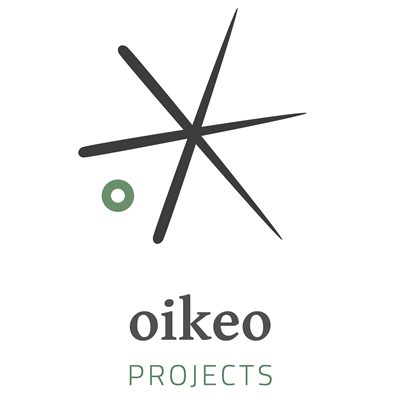

02.05.2013
In der 16-Millionen Stadt Delhi besuchen wir zwei bedeutende Gebäude von Shah Jahan aus der Mughal-Dynastie, werden krank – und sind schlussendlich doch glücklich.
Unsere Erfahrung hat gezeigt, dass es sich lohnt, zum Fahren früh aufzustehen. Verschlafen packen wir so morgens um 4.30 Uhr in Chandigarh unsere Sachen zusammen und fahren pünktlich um 5.00 Uhr los. Noch ist es um diese Zeit angenehm kühl und man hat die Strasse praktisch für sich. In der aufgehenden Sonne sehen wir drei Pfaue auf einem Strommast sitzen, auch ein paar bunte Papageien flattern neben uns vorbei. Damit hat es sich aber auch mit der Schönheit: Die Strecke in die Hauptstadt zeigt uns eines der grossen Probleme Indiens auf: Umweltverschmutzung. Flüsse und Felder sind mit Abfall übersät, der säuerlich schwere Geruch dringt durch Helm und Gesichtsmaske. Auf einer Brücke sehen wir, wie ein Auto anhält, sackweise Abfall ausgeladen und in den Fluss geworfen wird. Am Himmel klebt ein gelber Streifen, der auch nicht auf das nahende Gewitter zurückzuführen ist. Wir können nur verständnislos den Kopf schütteln.
Morgens um 7 Uhr überrascht uns dann das Gewitter. Es schüttet aus Kübeln und bis wir uns zu einer nahen Dhaba retten können, sind wir schon nass. Bei Abwarten und Tee trinken beobachten wir das Schauspiel. Nach kurzer Zeit ist es vorbei, der Himmel klärt sich, es wird heiss und wir werden trocken.
Dem Hereinfahren in die 16-Millionenstadt Delhi haben wir im Voraus mit Unbehagen entgegengeschaut. Wir rechnen mit einer langwierigen, mühsamen und gefährlichen Fahrt. Umso überraschter und erfreuter sind wir, als wir von den Aussenbezirken bis zum Hotel nur gerade 1 Stunde brauchen und diese auch noch angenehm zum Fahren ist.
In Delhi besichtigen wir das Rote Fort, welches von Shah Jahan 1634 während der Mughal-Dynastie erbaut wurde. Der Pomp und der Reichtum, in dem die Stadt damals erstrahlte, währte nicht lange, doch ist noch heute gut vorstellbar wenn man durch die Tore schreitet und die Paläste bewundert. Die floralen Muster aus eingelassenen farbigen Steinen im weissen Marmor sind vor allem in den Hauptpalästen zu finden, während die starken Mauern rundherum aus solidem rötlich braunem Sandstein gebaut wurden. Wir schlendern durch die Parkanlage, freuen uns an den Gebäuden und beobachten kleine Streifenhörnchen.
Einen ähnlichen Baustil wie derjenige des Roten Forts finden wir auch in Indiens grösster Moschee, das letzte von Shah Jahans Bauwerken. Sie fasst rund 25‘000 Menschen – doch wir sind froh, dass in der brütenden Mittagshitze bei bis zu 40 Grad nicht ganz so viele anwesend sind… Auch hier dominiert roter Stein, die dicken Mauern schützen vor der Sonne und in den Kuppelräumen ist es angenehm kühl.
Unser kulinarisches Vokabular wächst umgekehrt proportional zu unserer verbleibenden Reisezeit in Indien. Inzwischen kennen wir die gängigsten Namen der Speisen und werden nicht mehr überrascht, wenn wir Alu Gobi, Chana Masala oder ähnliches bestellen. Dennoch gibt es immer noch viel zu entdecken. In Delhi findet man wohl die grösste kulinarische Vielfalt, denn alle Spezialitäten des Landes kann man hier finden. Oder: könnte man. Wenn man nicht gerade mit Magenproblemen im Bett liegt, wie wir während der restlichen Zeit in Delhi. Zum Glück erhalten wir in diesen Tagen auch gute Nachrichten.
Am Montag erreicht uns endlich das E-Mail der Agentur, der wir den Auftrag gegeben haben, unsere Visa für den Iran zu organisieren. In den vergangenen Tagen haben wir mit Bangen in diversen Foren gelesen, dass während den Wahlen im Iran (15. Juni 2013) nur wenige bis keine Touristen ins Land gelassen werden, dass Aufenthalte gekürzt werden oder Visaanträge gar nicht erst angenommen werden. Umso grösser die Erleichterung, als wir per Mail den benötigten Code erhalten, mit dem wir in der Botschaft die Visa abholen können. Leider stellt sich dann auf der Botschaft heraus, dass wir nach Erhalt des Visums innerhalb von 15 Tagen einreisen müssen. Da dies so unsere Pläne durchkreuzt, müssen wir in 3 Wochen nochmals nach Delhi kommen, um dann das Visum abzuholen. So werden wir nun voraussichtlich um den 06. Juni von Delhi statt von Mumbai aus in den Iran fliegen. Diese kleine Änderung ist jedoch viel einfacher einzurichten, als wenn das Visum abgelehnt worden wäre und so ist unsere Freude ungetrübt, bald dieses wunderschöne Land besuchen zu dürfen.
Inzwischen wieder wohlauf werden wir bald weiterreisen Richtung Süden.
In the 16 million city of Delhi we visit two important buildings by Shah Jahan from the Mughal dynasty, get sick - and are ultimately happy nevertheless.
Our experience has shown that getting up early to drive is usually worth it. We sleepily pack up our things in Chandigarh at 4:30 a.m. and leave punctually at 5 a.m. It is still pleasantly cool at this time and you have the road practically to yourself. In the rising sun we see three peacocks sitting on a power pole, and a couple of colorful parrots flutter past us. But that’s about the beauty: The route to the capital shows us one of India’s big problems: environmental pollution. Rivers and fields are littered with rubbish, the sour, heavy smell penetrates through helmets and face masks. On a bridge we see a car stop, sacks of rubbish being unloaded and thrown into the river. A yellow stripe is visible at the sky, and it is not due to the approaching thunderstorm. We can only shake our heads in disbelief.
In the morning at 7 o'clock the thunderstorm surprises us. It pours and by the time we can finally save ourselves to a nearby dhaba, we are already completely wet. While waiting and drinking tea we watch the spectacle. After a short time it's over, the sky clears, it gets hot and we get dry.
We look ahead with unease to the drive into the 16 million city of Delhi. We anticipate a long, arduous and dangerous journey. We are all the more surprised and delighted when we only need 1 hour from the outskirts of the city to reach the hotel and even better, it is also pleasant to drive. In Delhi we visit the Red Fort, which was built by Shah Jahan in 1634 during the Mughal dynasty. The pomp and wealth in which the city shone did not last long, but is still easy to imagine today when you walk through the gates and admire the palaces. The floral patterns of colored stones embedded in the white marble can be found mainly in the main palaces, while the strong walls all around are made of solid reddish-brown sandstone. We stroll through the park, admire the buildings and watch little chipmunks.
A similar architectural style to that of the Red Fort can be found in India's largest mosque, the last of Shah Jahan's buildings. It can hold around 25,000 people - but we are glad that in the brooding midday heat of up to 40 degrees there are not quite that many... Here, too, red stone dominates, the thick walls protect against the sun and it is pleasantly cool in the dome rooms.
Our culinary vocabulary grows in inverse proportion to our remaining travel time in India. We now know the most common names of the dishes and are no longer surprised when we order Alu Gobi, Chana Masala or something similar. Still, there is still a lot to discover. In Delhi you will find the greatest culinary variety, because all specialties of the country can be found here. Or: you could. Unless you're lying in bed with stomach problems like we were in Delhi for the rest of the time. But fortunately, we're getting good news these days too.
On Monday we finally get the e-mail from the agency to whom we had given the order to organize our visas for Iran. In the past few days we read with apprehension in various forums that during the elections in Iran (June 15, 2013) only few or no tourists will be allowed into the country, that stays will be shortened or that visa applications will not even be accepted. The greater the relief when we receive the required code by email with which we can pick up the visa at the embassy. Unfortunately, it turns out at the embassy that we have to enter the country within 15 days of receiving the visa. Since this thwarts our plans, we have to come to Delhi again in 3 weeks to pick up the visa. So we are now likely to fly to Iran from Delhi instead of Mumbai around June 6th. However, this small change is much easier to implement than if the visa had been refused and so our joy to be able to visit this beautiful country soon is getting even greater.
In the meantime our health is restored and we will soon travel further south.

